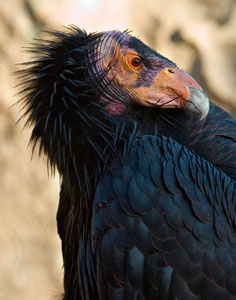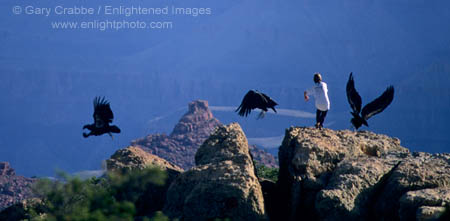 Picture: A California Condor at the Condor Ridge exhibit of the San Diego Wild Animal Park. Photo by Chuck Szmurlo.
Picture: A California Condor at the Condor Ridge exhibit of the San Diego Wild Animal Park. Photo by Chuck Szmurlo.
Now that I’m back from a week off with my family for Spring Break, I wanted to take a moment and respond to my last post, “Why I Like Free Photos.”
From the buyer’s side, I likened using Creative Commons image to being like stealing candy from a baby because it was so easy. All you had to do was pay attention to a few restrictions, the most common of which was properly crediting the photo. However, one of the comments highlighted a misunderstanding regarding the principle of “share-alike.” That, along with other points are prompting me to write this rebuttal: “What I don’t like about free photos.”
To be clear, photo buyers are like vultures. It’s their job to scavenge through heaps of material to find something that fills a need. If they find a photo that is free, what reason on earth would they have to keep looking or pay for something? Even when they have a budget for photo usage, they are under absolutely no obligation to give that money away if photographers don’t ask for it. (BTW, I have the greatest respect for photo buyers and photo editors. In fact, I offer those services as part of my own business.)
I think the greatest problem is that most of the people using the CC license model simply aren’t aware what value their images could have, simply don’t care, or don’t take the time to understand exactly what a CC license entails. And just like Royalty Free, assigning an image under the Creative Commons license is irrevocable once you’ve put it out there.
Picture: Biologist chasing recently released California Condors away from tourist lookouts to avoid habituation to humans, South Rim of the Grand Canyon, Arizona. Note wing size relative to person.

If I wasn’t a professional photographer, it would be easy to envision simply putting this image on the web at a place like Flickr, and marking it with a Creative Commons attribution license. Flickr is the prime scavenging ground for people looking for cheap or free photos, or simply for taking whatever they can find. Although it may not be a hugely commercial image, it certainly does have lots of editorial appeal, especially for textbooks.
Would someone have made the same choice about assigning a CC License if they knew ahead of time that a future a photo editor would be looking for an image that contained both condors and people in the wild? Would that choice change if they knew the buyer had a budget of several hundred dollars to pay for that use?
There is also a huge dichotomy that exists within the Creative Commons community and the photographic community regarding commercial use of an image. In general, the community thinks that a commercial use is anything that involves money, including use in an editorial magazine or book. However, in the photo and publishing communities, “commercial” is usually considered to define something specifically associated with the promotion of a product or service, and distinct from editorial. So what happens when someone marks a Creative Commons no commercial use licensed image that gets used inside a book because of a difference in semantics? Certainly an argument could be made from both sides, but the publishers usually have the advantage with bigger legal funds and lawyers on their side. It remains a gray area, and one that may eventually be decided in court.
There are also dangers and hazards that must be kept in mind by others. Recently, on a stock photography forum one photographer found out that images she had given to a nonprofit organization for use were now showing up on the Internet as having been available under a Creative Commons license. Both she and the nonprofit had to scramble quickly to try and rectify the situation. Yet it left me to wonder, what would happen to someone that had found one of those photos and used it believing it was a Creative Commons licensed photo?
Fortunately, when you do a search under the Creative Commons, they boldly state, “Do not assume that the results displayed in this search portal are under a CC license.” I know to satisfy my own concerns, and those of my publishers, I took the precautions to copy the license information and URL and put it into the image metadata, as well as making a screen capture of the page showing the image with the affirmation of the Creative Commons license.
In the end, it will always be the responsibilities of both the photographer and user to understand how they are licensing or using an image.
